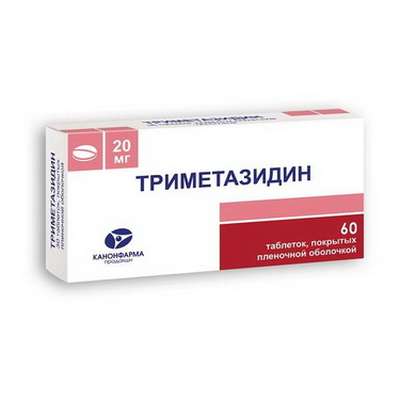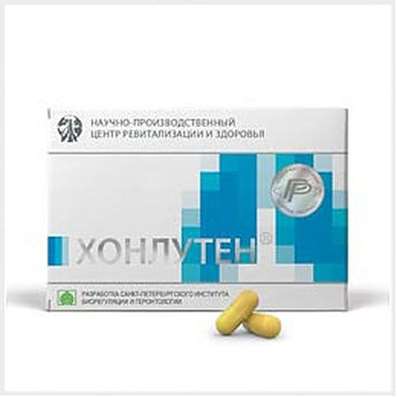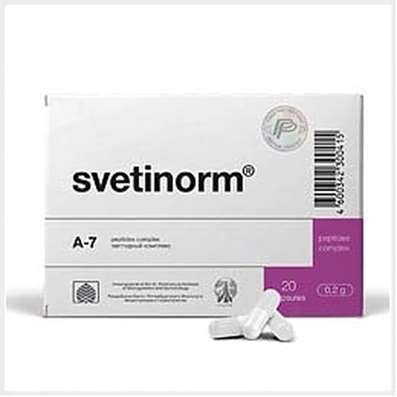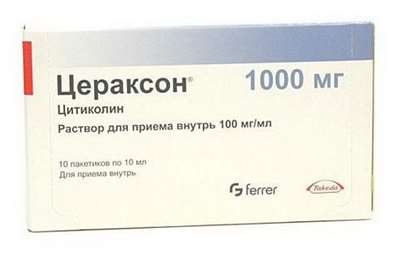Amitriptyline tablets - Instructions for Use, Dosage, Side Effects, Reviews
19 Jan 2017
Synonyms: ADTzimaia, Amiline, Amiplin, Amitone, Amitrac, Amitrac-CZ (Amitriptyline and Chlordiazepoxide), Amitrip, Amitriptilina Andromaco, Amitriptilina Cevallos, Amitriptilina L.CH., Amitriptilina La Santé, Amitriptilina Luar, Amitriptilina MK, Amitriptilina, Amitriptiline, Amitriptyline GM, Amitriptyline Remedica, Amitriptyline, Amitriptyline-Grindeks, Amitriptyline-IKA, Amypres, Amypres-C (Amitriptyline and Chlordiazepoxide), Amyzol, Apo-Amitriptyline, Axeptyl (Amitriptyline and Chlordiazepoxide), Conmitrip, Cuait-D (Amitriptyline and Trifluoperazine), Dapaz Compuesto (Amitriptyline and Chlordiazepoxide), Emotrip (Amitriptyline and Chlordiazepoxide), Fiorda, Kamitrin, Latilin, Limbival Forte (Amitriptyline and Chlordiazepoxide), Limbritol (Amitriptyline and Chlordiazepoxide), Maxitrip, Mitryp, Mitryp Forte (Amitriptyline and Chlordiazepoxide), Odep, Tadamit, Tiperin (Amitriptyline and Chlordiazepoxide), Trepiline, Tryptanol, Adepril, ADT, Amilavil, Amilin, Amineurin, Amineurin retard, Amiplin, Amirol, Amit, Amitin, Amitrip, Amitriptilin R. Desitin, Amitriptilina Clorhidrato Mintlab, Amitriptilinã, Amitriptilino, Amitriptylin beta, Amitriptylin beta retard, Amitriptylin Dak, Amitriptylin Desitin, Amitriptylin Leciva, Amitriptylin Nycomed, Amitriptylin Slovakofarma, Amitriptylin Valeant, Amitriptylin, Amitriptylin-CT, Amitriptylin-dura, Amitriptyline Changzhou Siyao, Amitriptyline Chen Ho, Amitriptyline Glaxo, Amitriptyline HCl Actavis, Amitriptyline HCl Apotex, Amitriptyline HCl CF, Amitriptyline HCl Mylan, Amitriptyline HCl PCH, Amitriptyline HCl ratiopharm, Amitriptyline HCl Sandoz, Amitriptyline HCl Teva, Amitriptyline Hydrochloride Caraco, Amitriptyline Hydrochloride Medopharm, Amitriptyline Hydrochloride Mutual, Amitriptyline Hydrochloride Mylan, Amitriptyline Hydrochloride Sandoz, Amitriptyline Hydrochloride Vintage, Amitriptyline Hydrochloride, Amitriptyline Jinup, Amitriptyline Nycomed, Amitriptyline Update, Amitriptyline, Amitriptyline-Grindeks, Amitriptylin-neuraxpharm, Amitriptylin-neuraxpharm retard, Amitriptylin-Sandoz, Amitriptylinum ICN Polfa, Amitriptylinum, Amitriptylinum VP, Amitriptylin-Zentiva, Amitryp, Amixide (Amitriptyline and Chlordiazepoxide), Amixide H (Amitriptyline and Chlordiazepoxide), Amotrip, Amyline, Amytril, Amyzol, Anapsique, Antalin (Amitriptyline and Chlordiazepoxide), Apo-Amitriptyline, Chlordiazepoxide and Amitriptyline Hydrochloride Mylan (Amitriptyline and Chlordiazepoxide), Deprelio, Diapatol (Amitriptyline and Chlordiazepoxide), Elatrol, Elatrolet, Elavil, Endep, Klotriptyl (Amitriptyline and Chlordiazepoxide), Laroxyl, Libotryp-XL (Amitriptyline and Chlordiazepoxide), Limbitrol (Amitriptyline and Chlordiazepoxide), Limbitrol-H (Amitriptyline and Chlordiazepoxide), Limbitryl (Amitriptyline and Chlordiazepoxide), Limbival (Amitriptyline and Chlordiazepoxide), Maxitrip-CZ (Amitriptyline and Chlordiazepoxide), Maxivalet, Minitran (Amitriptyline and Perphenazine), Modup, Morelin (Amitriptyline and Chlordiazepoxide), Mutabase (Amitriptyline and Perphenazine), Mutabon (Amitriptyline and Perphenazine), Neo Amitriptilin, Neuragon (Amitriptyline and Perphenazine), Nobritol Forte (Amitriptyline and Medazepam), Nobritol (Amitriptyline and Medazepam), Normaln, Perphenazine and Amitriptyline Hydrochloride Mylan (Amitriptyline and Perphenazine), Pertriptyl (Amitriptyline and Perphenazine), Pinsaun, Polybon (Amitriptyline and Perphenazine), Polytanol, Protanol, Qualitriptine, Redomex, Sandoz Amitriptyline, Saroten, Saroten Retard, Sarotex, Sarotex Retard, Sedans (Amitriptyline and Chlordiazepoxide), Stelminal, Syneudon, Teperin, Thymontil, Trip, Tripta, Triptafen (Amitriptyline and Perphenazine), Triptilin, Triptizol, Triptyl, Triptyline, Tripyline, Trynol, Tryptanol, Tryptin, Tryptizol, Uxen Retard.
Active substance: Amitriptyline.
What is amitriptyline?
Amitriptyline is a tricyclic antidepressant. Amitriptyline affects chemicals in the brain that may be unbalanced in people with depression.
Amitriptyline is used to treat symptoms of depression.
Important information about amitriptyline
You should not use this medicine if you have recently had a heart attack.
Do not use amitriptyline if you have used an MAO inhibitor in the past 14 days, such as isocarboxazid, linezolid, methylene blue injection, phenelzine, rasagiline, selegiline, or tranylcypromine.
Before taking amitriptyline, tell your doctor if you have used an "SSRI" antidepressant in the past 5 weeks, such as citalopram (Celexa), escitalopram (Lexapro), fluoxetine (Prozac, Sarafem, Symbyax), fluvoxamine (Luvox), paroxetine (Paxil), or sertraline (Zoloft).
You may have thoughts about suicide when you first start taking an antidepressant such as amitriptyline, especially if you are younger than 24 years old. Your doctor will need to check you at regular visits for at least the first 12 weeks of treatment.
Report any new or worsening symptoms to your doctor, such as: mood or behavior changes, anxiety, panic attacks, trouble sleeping, or if you feel impulsive, irritable, agitated, hostile, aggressive, restless, hyperactive (mentally or physically), more depressed, or have thoughts about suicide or hurting yourself.
ATC - N06AA09 amitriptyline
Pharmacological group - Antidepressants.
Nosological classification (ICD–10)
F10.3 abstinence;
F20 Schizophrenia;
F29 Inorganic psychosis, unspecified;
F32 Depressive episode;
F33 Recurrent depressive disorder;
F41.2 Mixed anxiety and depressive disorder;
F50.2 Bulimia Nervosa;
F60.3 Emotionally unstable personality disorder;
F90.0 disturbance of activity and attention;
F91.9 Conduct disorder, unspecified;
F92.0 Depressive conduct disorder;
F98.0 Enuresis inorganic nature;
G43.9 Migraine, unspecified;
G53.0 neuralgia after herpes zoster (B02.2 +);
G62.9 Polyneuropathy, unspecified;
G63.2 Diabetic polyneuropathy (E10-E14 + with common fourth character.4);
K25 Gastric;
K26 Duodenal Ulcer;
M79.0 Rheumatism, unspecified;
M79.2 Neuralgia and neuritis unspecified;
R51 Headache;
R52.1 Constant non stopped pain;
R52.2 Other constant pain;
R52.9 Pain unspecified;
T14.4 Injury of nerve (nerve) of unspecified body region.
Pharmacological action
Pharmacological action - sedative, timoleptic, antidepressant.
Antidepressant from the group of tricyclic compounds derived dibenzocyclogeptadine.
The mechanism of antidepressant action is associated with increased concentration of norepinephrine in the synapses and/or serotonin in the central nervous system by inhibiting reverse neuronal capture of these mediators. Prolonged use reduces the functional activity of β-adrenergic receptors and serotonin receptors of the brain, normalizes adrenergic and serotonergic transmission, restores the balance of these systems, impaired in depressive states. When anxiety and depressive states, reduces anxiety, agitation and depressive symptoms.
Also has some analgesic effect, which is believed to be associated with changes in the concentrations of monoamines in the central nervous system, especially serotonin, and effects on endogenous opioid system.
Possesses strong peripheral and central anticholinergic action, due to a high affinity for m-cholinergic receptors; strong sedative effect connected with affinity for histamine H1 receptors and alpha-adrenoceptor blocking action.
Has antiulcer effect mechanism is due to the ability to block histamine H2 receptors in the parietal cells of the stomach and provide a sedative and m-anticholinergic action (if gastric ulcer and duodenal ulcer reduces pain, promotes healing of ulcers).
Efficiency in bedwetting is caused, apparently, anticholinergic activity, which leads to an increase in the ability of the bladder to stretch, direct β-adrenergic stimulation, the activity of α-adrenergic agonists, accompanied by increased tone of the sphincter and the central blockade of serotonin reuptake.
The mechanism of therapeutic action for bulimia nervosa is not installed (possibly similar to that for depression). It shows the distinct efficacy of amitriptyline in bulimia patients without depression, as well as when it is available, while reducing bulimia can be observed without a concomitant weakening of the most depressed.
With general anesthesia reduces blood pressure and body temperature. Does not inhibit MAO.
Antidepressant effect develops within 2–3 weeks after the start of the application.
Pharmacokinetics of amitriptyline
Bioavailability of amitriptyline is 30–60%. Plasma protein binding is 82–96%. Vd - 5–10 l/kg. Metabolized to the active metabolite nortriptyline.
T 1/2 - 31–46 hours. Excreted mainly by the kidneys.
Amitriptyline Dosage
For oral starting dose is 25–50 mg at night. Then, within 5–6 days the dose is increased to individually 150–200 mg/day (most of the dose is taken at night). If during the second week of no improvement occurred, the daily dose increased to 300 mg. With the disappearance of symptoms of depression to reduce the dose of 50–100 mg/day and continue therapy for at least 3 months. In elderly patients with lung disorders the dose is 30–100 mg/day is usually 1 time/at night, after achieving the therapeutic effect switching to the minimum effective dose - 25–50 mg/day.
When nocturnal enuresis in children aged 6–10 years - 10–20 mg/day for the night, at the age of 11–16 years - 25–50 mg/day.
IM - the initial dose is 50–100 mg/day in 2–4 administration. If necessary, the dose may be gradually increased to 300 mg/day, in exceptional cases - up to 400 mg/day.
Amitriptyline Drug Interactions
While the use of drugs, providing a depressing effect on the central nervous system, may significantly increased inhibitory action on the central nervous system, hypotensive effect, respiratory depression.
While the use of drugs having anticholinergic activity may increase anticholinergic effects.
With simultaneous use may increase the action of sympathomimetic funds for the cardiovascular system and increase the risk of cardiac arrhythmias, tachycardia, severe hypertension.
While the use of antipsychotic drugs (neuroleptics) are relatively suppressed metabolism, with a reduction in the threshold of convulsive readiness.
While the use of antihypertensive drugs (except clonidine, guanethidine and their derivatives) may increase the antihypertensive action and the risk of orthostatic hypotension.
With the simultaneous use with MAO inhibitors may develop a hypertensive crisis; with clonidine, guanethidine - may decrease the hypotensive effect of clonidine or guanethidine; with barbiturates, carbamazepine - may decrease the action of amitriptyline due to increasing its metabolism.
Described a case of serotonin syndrome with concomitant use of sertraline.
In an application with sucralfate decreases absorption of amitriptyline; with fluvoxamine - increases the concentration of amitriptyline in blood plasma and the risk of toxic action; with fluoxetine - increased concentration of amitriptyline in plasma and develop toxic reactions due to inhibition of isoenzyme CYP2D6 under the influence of fluoxetine; with quinidine - may slow metabolism of amitriptyline; cimetidine - possibly slowing down the metabolism of amitriptyline, increasing its plasma concentration and the development of toxic effects.
While the use of ethanol increases the effects of ethanol, especially during the first few days of therapy.
Pregnancy and lactation
Amitriptyline should not be used during pregnancy, especially in the I and III trimester, except in cases of extreme necessity. Adequate and well-controlled clinical studies safety of amitriptyline during pregnancy was conducted.
Acceptance of amitriptyline should be gradually canceled at least 7 weeks prior to delivery to avoid the development of withdrawal syndrome in the newborn.
In experimental studies, amitriptyline is teratogenic.
Contraindicated during lactation. Excreted in breast milk and may cause drowsiness in infants.
Amitriptyline Side effects
CNS and peripheral nervous system: drowsiness, fatigue, fainting, anxiety, confusion, agitation, hallucinations (especially in elderly patients and in patients with Parkinson’s disease), anxiety, restlessness, mania, hypomania, aggressiveness, impaired memory, depersonalization, increased depression, decreased ability to concentrate, insomnia, nightmares, yawning, activation of psychosis symptoms, headache, myoclonus, dysarthria, tremor (especially of hands, head and tongue), peripheral neuropathy (paresthesia), myasthenia gravis, myoclonus, ataxia, extrapyramidal syndrome, acceleration and intensification of epileptic seizures, EEG changes.
Cardio-vascular system: orthostatic hypotension, tachycardia, conduction disturbances, dizziness, nonspecific ECG changes (ST interval or tooth T), arrhythmias, blood pressure lability, impaired intraventricular conduction (widening complex QRS, change the interval PQ, block bundle-branch block).
From the digestive system: nausea, heartburn, vomiting, gastralgia, increase or decrease in appetite (increase or decrease in body weight), disease, change in taste, diarrhea, darkening of the tongue; rarely - liver dysfunction, cholestatic jaundice, hepatitis.
From the Endocrine: testicular swelling, gynecomastia, breast enlargement, galactorrhea, changes in libido, reduced potency, hypo-or hyperglycemia, hyponatremia (decreased production of vasopressin), a syndrome of inappropriate secretion of ADH.
Hematopoietic system: agranulocytosis, leukopenia, thrombocytopenia, purpura, eosinophilia.
Allergic reactions: skin rash, pruritus, urticaria, photosensitivity, swelling of the face and tongue.
Effects due to the anticholinergic activity: dry mouth, tachycardia, accommodation disturbances, blurred vision, mydriasis, increased intraocular pressure (only those with a narrow anterior chamber angle), constipation, paralytic ileus, urinary retention, decreased sweating, confusion, delirium or hallucinations.
Other: hair loss, tinnitus, edema, hyperpyrexia, swollen lymph nodes, pollakiuria, hypoproteinemia.
Indications
Depression (especially with anxiety, agitation and sleep disorders, including childhood, endogenous, involutional, reactive, neurotic, drug, with organic brain damage, alcohol withdrawal), schizophrenic psychoses, mixed emotional disorders, behavioral disorders (activity and attention), nocturnal enuresis (except in patients with hypotonia of the bladder), bulimia nervosa, chronic pain syndrome (chronic pain in cancer patients, migraine, rheumatic pain, atypical facial pain, postherpetic neuralgia, posttraumatic neuropathy, diabetic neuropathy, peripheral neuropathy), prophylaxis of migraine, peptic ulcer and duodenal ulcer.
Contraindications
The acute period and early recovery period after myocardial infarction, acute alcohol intoxication, acute intoxication with soporific, analgesic and psychotropic drugs, angle-closure glaucoma, severe violations AV- and intraventricular conduction (bundle-branch block, AV-block II degree), lactation, Children under 6 years of age (for oral administration), children under the age of 12 years (for the/m and/in the introduction), simultaneous treatment with MAO inhibitors, and the period of 2 weeks prior to their use, increased sensitivity to amitriptyline.
Cautions
With careful use in ischemic heart disease, arrhythmias, heart block, heart failure, myocardial infarction, hypertension, stroke, chronic alcoholism, thyrotoxicosis, against the background of therapy with thyroid cancer.
The therapy amitriptyline caution is needed with a sharp transition in the vertical position from the “lying” or “sitting”.
In a dramatic reception may develop withdrawal symptoms.
Amitriptyline in doses greater than 150 mg/day lowers the threshold of convulsive readiness; should take into account the risk of seizures in susceptible patients, as well as the presence of other factors that increase the risk of seizures (including with traumatic brain injury of any etiology, concomitant use of antipsychotic drugs in the period of refusal or withdrawal of ethanol drugs possessing anticonvulsant activity).
It should be borne in mind that patients with depression may attempt suicide.
In conjunction with electroconvulsive therapy should only be used with careful medical supervision.
In predisposed patients and elderly patients may provoke the development of drug psychosis, mainly at night (after the withdrawal of the drug are within a few days).
Can cause paralytic ileus, mainly in patients with chronic constipation who are elderly or in patients who have to comply with bed rest.
Prior to the general or local anesthesia, the anesthetist should be warned that the patient is taking amitriptyline.
With prolonged use, an increase the frequency of dental caries. May increase the need for riboflavin.
Amitriptyline can be applied not earlier than 14 days after discontinuation of MAO inhibitors.
Should not be used simultaneously with adrenergic and sympathomimetic, including epinephrine, ephedrine, isoprenaline, norepinephrine, phenylephrine, phenylpropanolamine.
Used with caution in conjunction with other drugs, anticholinergic effect.
During the reception, amitriptyline to avoid drinking alcohol.
Effects on ability to drive vehicles and management mechanisms
During the period of treatment should refrain from potentially hazardous activities requiring increased attention and rapid psychomotor reactions.
Amitriptyline Review
Now I try to tell my story about amitriptyline in brief. I took this drug half a year ago, as she was in a terrible depression. First, as usual happens to normal people is that they disagree with their loved ones. That's how I happened at that time, I met a long time, was eventually betrayed. Plus, the long time I could not find a job, it is very much affected my stress. Plus family have problems. Eternal emotions, tears, frustration dragged me into the black fabric of the pool every day without meaning, without goals and desires, without appetite, lethargy overtook me, everything irritated me every detail, frustrated at all, and at all times. Not happy just nothing. Even girlfriends could not calm, in on itself, no longer smiling, enjoy, just there and gasped. The moral of all I was disgusted. I experience the first fear when fainted from exhaustion on hunger, because the appetite and exhaustion that night did not sleep, for days on end just like a plant, silent and barely breathing. I bought my mother the drug, so the spacecraft need to have at least something to do. It helped. Two weeks later came back to me the meaning of life, the joy of all things, appetite and rather brutal, ate everything that I wanted. The nerves have calmed down, and I fell in love again, my life and everyone around. Therefore, those who give up and is going through, take, do not be afraid, too, will be the most happy. Now I am very happy, I have a favorite guy, favorite work, and a family favorite.
Medicinal antidepressants serious thing and take them, of course, need to by a physician.
I have been prescribed "Amitriptyline" many years ago, since then periodically accept it. Why periodically, because to him with a long reception habituation occurs.
Now convinced of their own experience. Somehow it did not stop taking it for a year, then there was a strong withdrawal symptoms. Two months were very bad (here will not go into details).
Generally, "Amitriptyline" are usually intended for long-term treatment with the tablets of the reception at different doses three times a day.
I also saw under the scheme. But for myself I decided it was too.
And it limits one tablet at night.
Despite the fact that the drug amitriptyline quite old (about it because a lot of criticism), but still knows his stuff. Well calms the nervous system, resulting in a sense, it helps to cope with depression.
It has weak hypnotic effect, and therefore accept for the night.
I have not had adverse events (with the exception of the worst-addictive). But when the measure courses, then everything is fine.
The only thing I want to add, I prefer to import "Amitriptyline" (preferably Austria). The jar of 50 tablets.
With antidepressant "Amitriptyline" I pushed once the fate of my mother. Her brother died and nerves began to develop neurosis. I bought her all kinds of drugs, spent a lot of money, but did not really help. The internal tension, tremors, body aches, burning sensation in the chest, insomnia, chronic headaches, bad mood mother was tortured for six months. And most importantly the adrenaline went beyond the norm, confusion, restlessness in one place, constantly she wanted to run somewhere, pursued a constant feeling of fear. A few months later it added to the neuroses and even depression, as her mother began to feel that this cure is no longer possible. I had to leave work because she could not be in the team, among the people. Then one day a friend of my mother therapist advised to use this drug is very inexpensive. Taking these pills for a month will remove all of the above symptoms. It is well soothes and relaxes the nervous system. Currently this drug Mom uses at bedtime, in those moments when difficult to sleep, and in the general state of her normal. Of course this drug is not candy, but the functions it performs well. Its main side action-is a dry mouth and slight numbness of the tongue. Other side effects have been observed. With this drug Mom went back to normal life.

 Cart
Cart





